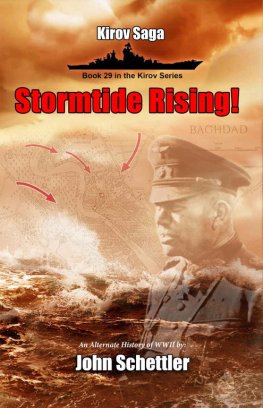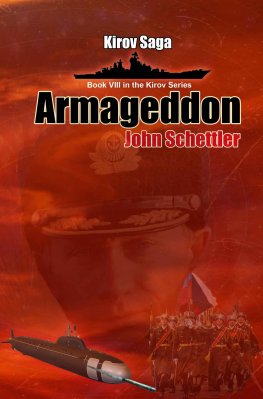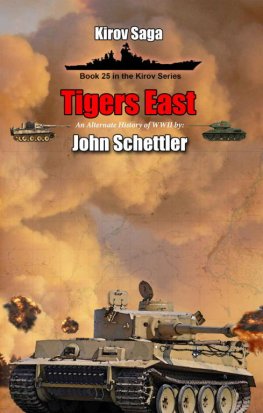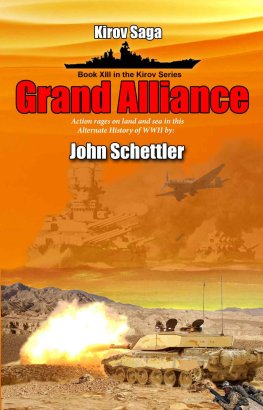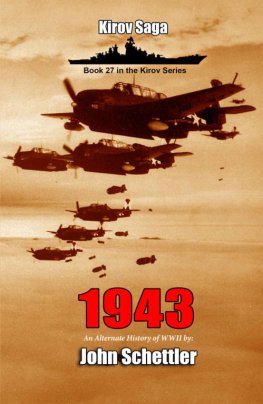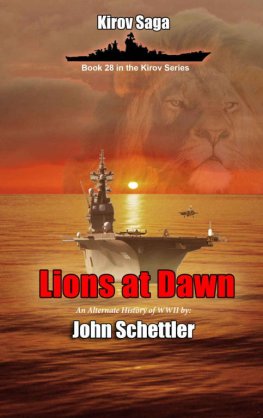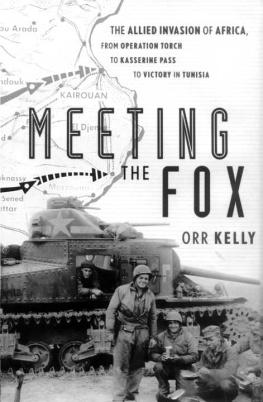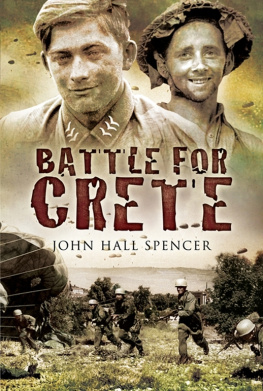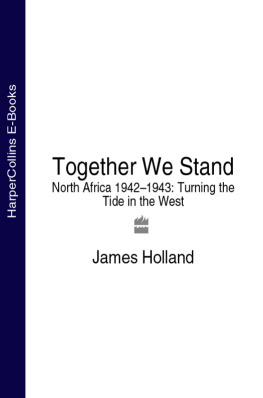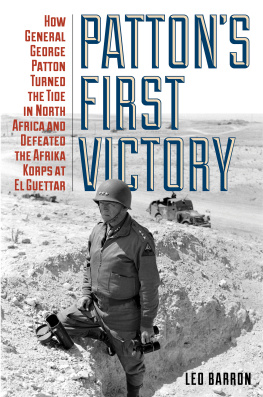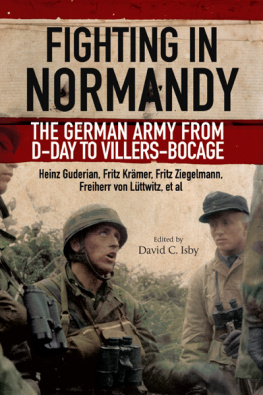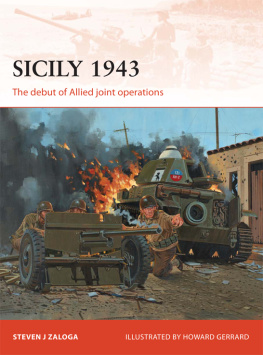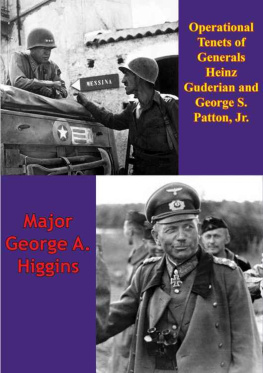Kirov Saga:
STORMTIDE RISING
by
John Schettler
Dear Readers,
After the shock and surprise of finding that Takami was not the only warship from 2021 to challenge Karpovs reign of terror, Kirov narrowly averts disaster. Once again, Karpov resorts to the last extreme to repel the dangerous attack by stealth jets that his helicopters have been unable to see and track. The string of glide bombs unleashed by Admiral Kitas F-35s seemed, at first, to be much less of a threat than the fast moving missiles Kirov might fling at its enemies, yet they prove to be very accurate, capable of delivering a saturation attack that simply puts too many weapons on target for the ship to defend itself. As Karpov himself grimly admits, something always gets through.
His resort to the use of one of his three precious nuclear warheads to blast one wave of the glide bomb attack out of the sky, was still barely enough to save the ship. Friedrich Nietzsche wrote that: One must still have chaos in oneself to give birth to a dancing star. Karpov, though sobered and wizened by his experience, still has that chaos within, which is why he does not hesitate to manifest it in the world about him. He unleashed his star, and saved the ship, and yet his final resort to speed and endurance remains unspoken testimony to the danger he now perceives, not only to the ship and crew, but to the soaring artifice of his ambitions; his lofty position as head of the Free Siberian State, and his aspirations to restore Russias lost territories, seized by Japan so long ago after his failed sortie to 1908. He has unfinished business there, as we shall see at the end of this volume.
In the meantime Ivan Gromyko has taken Kazan north to go carrier hunting, though he risks detection in a dangerous environment where his enemies can launch helicopters from nearly every ship in their task force, each one capable of finding and killing his sub.
We will return briefly to naval matters at the outset of this volume, to the admirals on every side as they assess their current situation, Tovey, Karpov, Kita, and Raeder. But Adolf Hitler also makes a number of appearances here that will have a dramatic effect on the course of events, both at sea and in Operation Phoenix. Regarding that, our hero Anton Fedorov, has been quietly at work behind the scenes, leaking information to German intelligence that has a most dramatic effect.
As Admiral Raeder sees the very existence of his surface fleet now at stake, he gets a new and most unexpected mission, a last dance for his warriors at sea to prove their worth. Then we return to the Tunisian Front where Erwin Rommel will also strive to regain lost glory with Operation Sturmflut, (Stormtide.) There he jousts with a most capable opponent in George Patton, and the outcome weighs heavily on the career tracks of both men.
Vladimir Karpov is not the only man with chaos in his soul, and the will to unleash the full measure of every weapon at his command. The Fhrer makes a most surprising attack in this volume, and then we return to Heinz Guderians invasion of Iraq. It will lead him inevitably to the heart of that country, the sprawling, steamy city of Baghdad, which he must take to have any hope of continuing on to the south. Reluctant to fight that battle of attrition, he has no choice, and a detailed presentation of that struggle sits at the heart of this volume.
The action at Baghdad was simulated at company level on a scale of 125 meters per hex. To do so I had to obtain a map of the city as it was in the 1940s, and I will post a number of battle maps for all that action here on the web site. (But be advised that they can be spoilers for that action. I note which map depicts the events within the narrative to make for safer viewing at the appropriate time). For the fighting in Tunisia, Ive just placed a general reference map online so you can find the towns mentioned and get to know the geography that so influenced that battle.
As Stormtide Rising concludes, I again reserve the last segments for Karpov, Kirov and the situation in the Pacific as both sides take a hard look at what may lie in store for them, and make a startling decision. Enjoy!
John SchettlerSo the darkness shall be the light,
And the stillness the dancing.
T.S. Eliot
Admiral Tovey sat at his desk in his office at Scapa Flow, a weariness on him that he had felt for some time. He had even resorted to time off ashore, taking leave in the Scottish highlands, but the harsh winter had put an end to that. He had never seen such cold, deep bone chilling cold in the north, and the ice was advancing faster than ever before.
That heavy winter had settled over Russia, freezing that front to a near standstill, a winter worse than that of 1941 where the Germans had suffered so badly in the smoldering ruin of Moscow. The lack of high tempo operations had given some respite to the supply situation for the Russians. Their factories continued to operate in the bitter conditions, but they were still in desperate need of any support they could get.
Tovey sighed, signing the orders drafted on his desk that morning, and in so doing he did not then realize that he was about to set in motion a chain of events that might take the head of his opposite number in the German NavyAdmiral Raederand have far reaching consequences for operations in the Med, the fate of Rommel and Kesselring in Tunisia, and the lifeline Britain relied on for oil from the Middle East. Big things have small beginnings, Pushpoints that can seldom be seen where they lurked in the haystack of time. His signature on that order was one of them.
* * *
After the disastrous and heavy losses sustained by Convoy PQ-17, the Allies had been forced to suspend artic convoys to Murmansk. The new German naval base at Nordstern remained a dangerous barb in the flank of any operation teed up for the Norwegian Sea or Arctic region. So it was with some hesitation that Tovey finally approved the order to begin a new series of convoys bound for Murmansk, and the first two were already on their way, Convoys JW-51A and JW-51B. They were carrying 202 tanks, over 2,000 other vehicles, 87 fighters, 33 bombers, 11,500 short tons of fuel, 12,650 short tons of aviation fuel and just over 54,000 short tons of general supplies and ammunition. With the winter closing in, they had but a brief window of opportunity to reach Murmansk, for even that port was experiencing increasing difficulties with ice.
King George V and the cruiser Jamaica were the heart of the heavy Cover Force for Convoy JW-51A on December 15, of 1942. (Berwick would have gone in Fedorovs history, but that ship had been sunk in this telling of events). Six other destroyers formed the Close Cover, and they would be opposed by only three German U-Boats. Tovey was encouraged when that convoy slipped through the thin German U-boat screen undetected, and in the thick arctic weather and polar night, it was never spotted by the Luftwaffe patrols.
The second convoy was therefore ordered out immediately, sailing from Loch Ewe on the 22nd of December. This time the Heavy Cover Force was to be handled by the battleship Anson, with cruiser Cumberland and five destroyers, with a further cruiser force of Jamaica and Sheffield, and six more destroyers in immediate escort. As fate would have it, the convoy ran afoul of gale force winds just after Christmas of 1942, and was scattered. In the operations undertaken to locate the stragglers and reassemble for the run to Murmansk, the German U-354 spotted the merchant ships, and raised the alarm.

